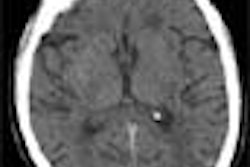CHICAGO - Living in the polluted atmosphere of Mexico City -- the home to 6 million children -- appears to be associated with lung abnormalities not seen in children living in relatively unpolluted coastal Mexican towns.
Researchers found that nearly half of the capital city children they examined showed hyperinflated lungs and had greater appearances of interstitial lines in their chest x-rays, while such changes in lung structure were rare in the control group.
"These are signs that these children may go on to develop chronic lung disease,' said Dr. Lynn Fordham, associate professor and section chief of pediatric imaging at the University of North Carolina School of Medicine at Chapel Hill.
The 241 children in the study were recruited from a neighborhood in southwestern Mexico City and, with informed consent of their parents, underwent chest x-rays. They were compared with the chest examinations of 19 children in the coastal city.
Bilateral hyperinflation was seen in 151 of the 241 Mexico City children. The lungs appeared to have a 10 to 15 percent greater inflation than normal lungs, Fordham said at the RSNA meeting. Only one of the 19 children in the control group showed hyperinflation.
The linear interstitial markings were seen on radiographs of 126 of the 241 metropolitan youngsters and none of the coastal children.
Fordham said the evaluation of the images, including some computed tomography studies of children with the most severe abnormalities, found enlarged airways, air trapping and lung nodules, believed to be lymph glands pigmented with air pollutant particles.
She said the children selected for the study were apparently healthy. "They had no asthma, no allergies, didn't have indoor pets, didn't smoke, didn't live in homes with inside fires," she said. However, several appeared to have a dry cough and running noses, which might be attributable to their lung conditions, she said.
"Chronic exposure to air pollution should be considered in the differential for hyperinflation and increased interstitial markings in the school-age child," she said.
Fordham said a similar study on euthanized stray dogs found that the city canine lungs showed similar abnormalities as the city-dwelling children, but the animals from outside the city did not have those lungs aberrations.
She also noted that Mexico City has high levels of air pollution due to the confluence of 20 million people who drive 4 million cars in a culture with four daily commuter rush hours due to the mid-afternoon siesta period. In addition, the city is located at high altitude in an area prone to temperature inversions that create almost daily levels of ozone far above healthy levels.
By Edward Susman
AuntMinnie.com contributing writer
November 29, 2001
For the rest of our coverage of the 2001 RSNA meeting, go to our RADCast@RSNA 2001.
Copyright © 2001 AuntMinnie.com



















